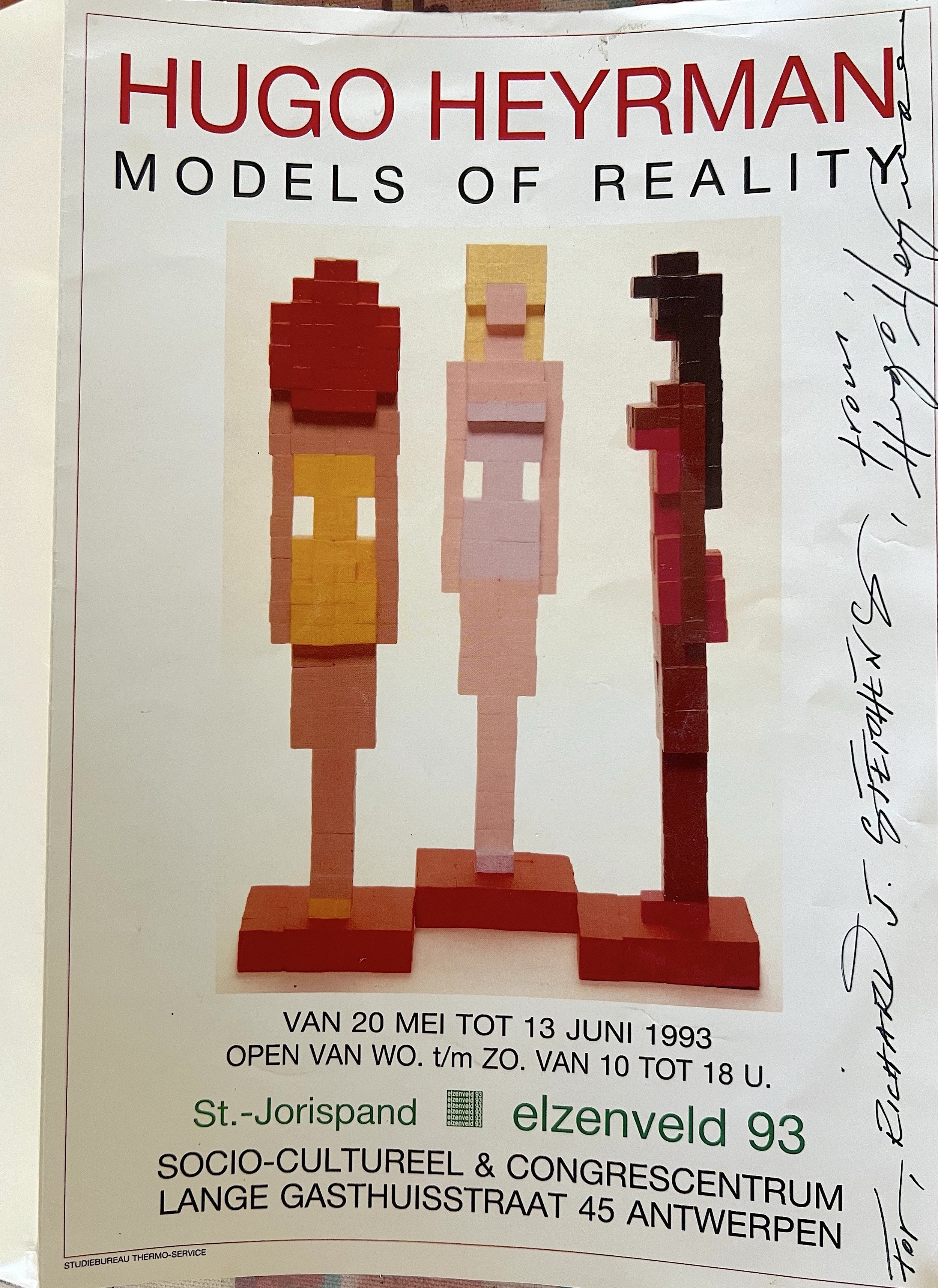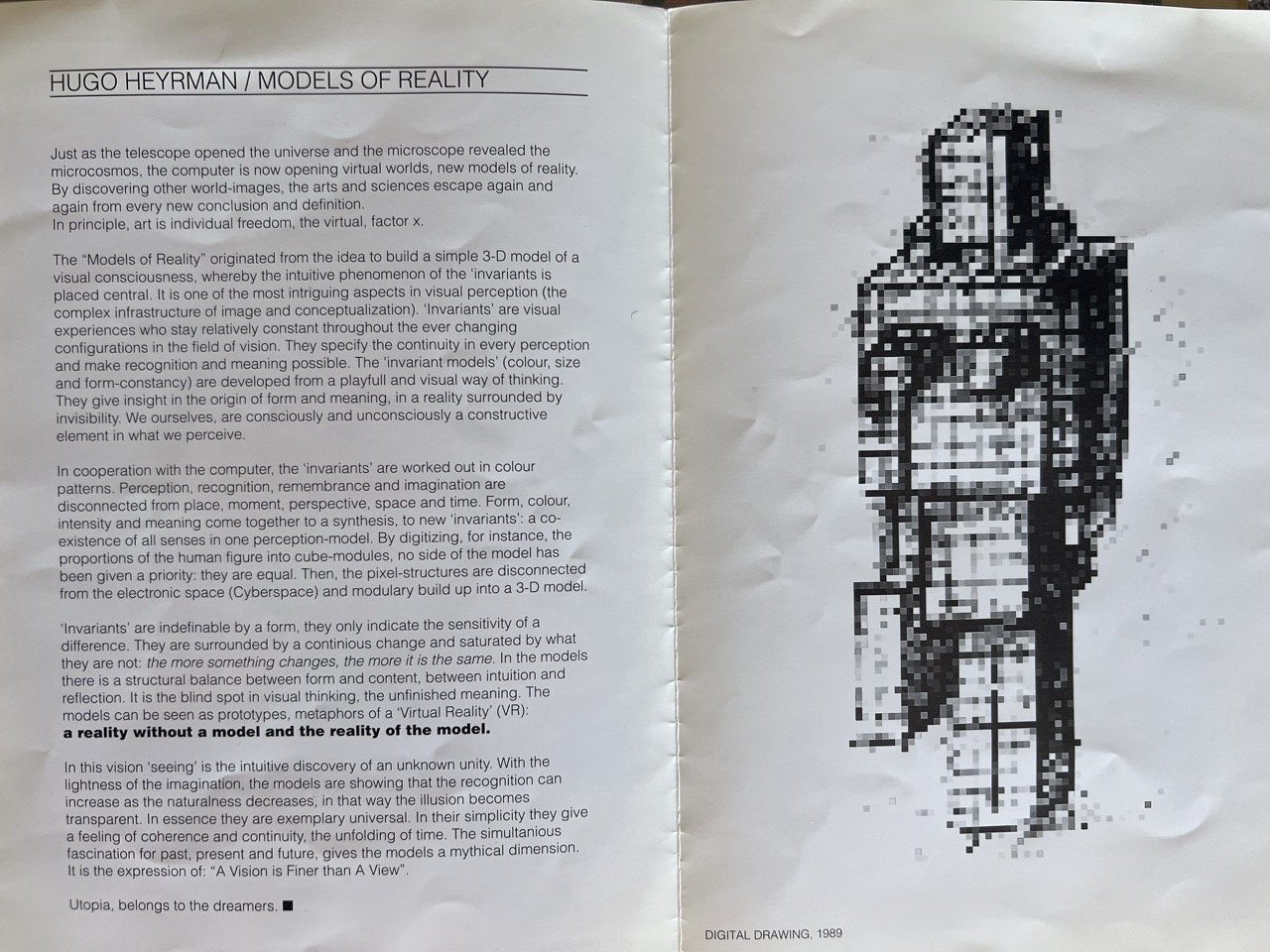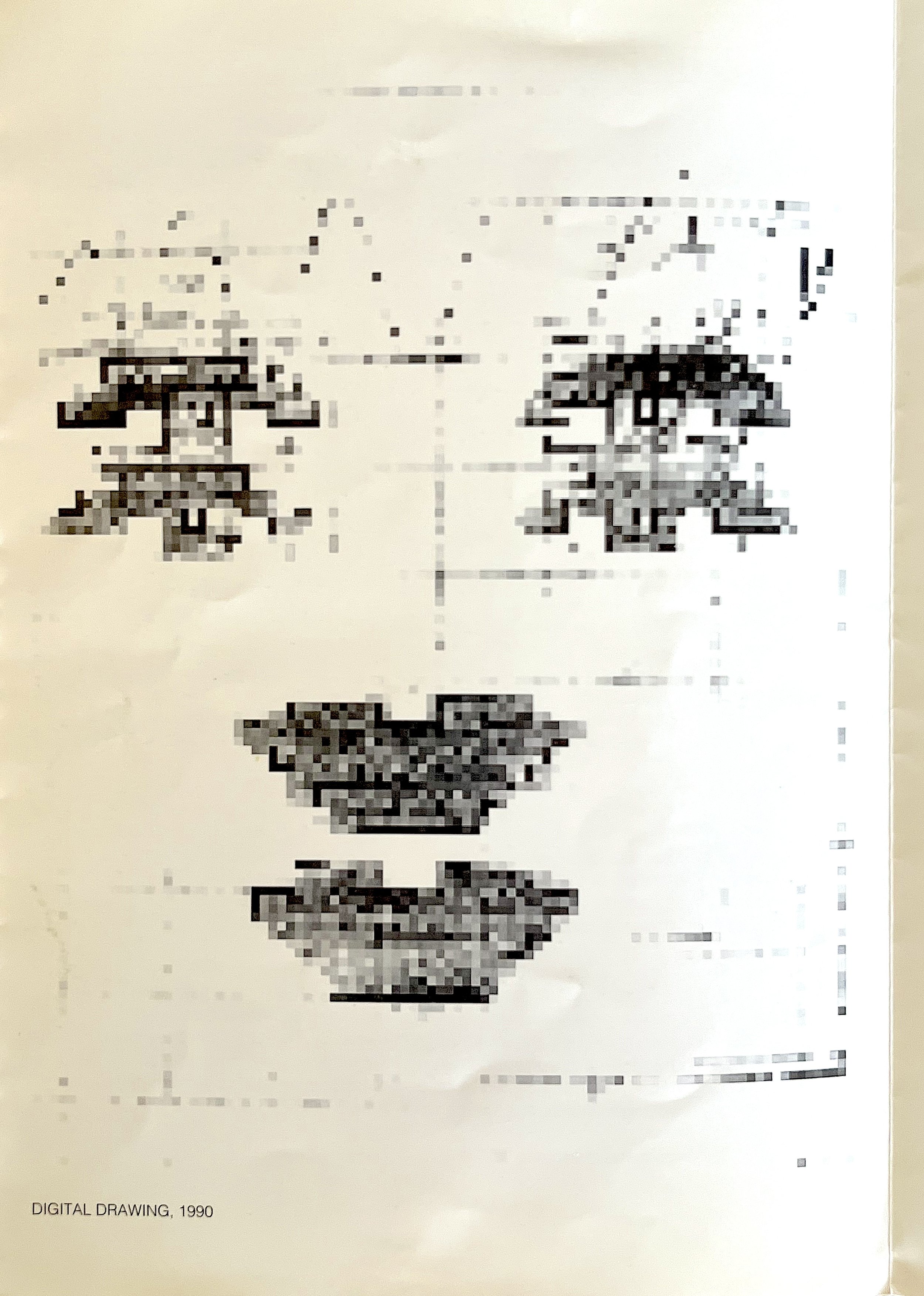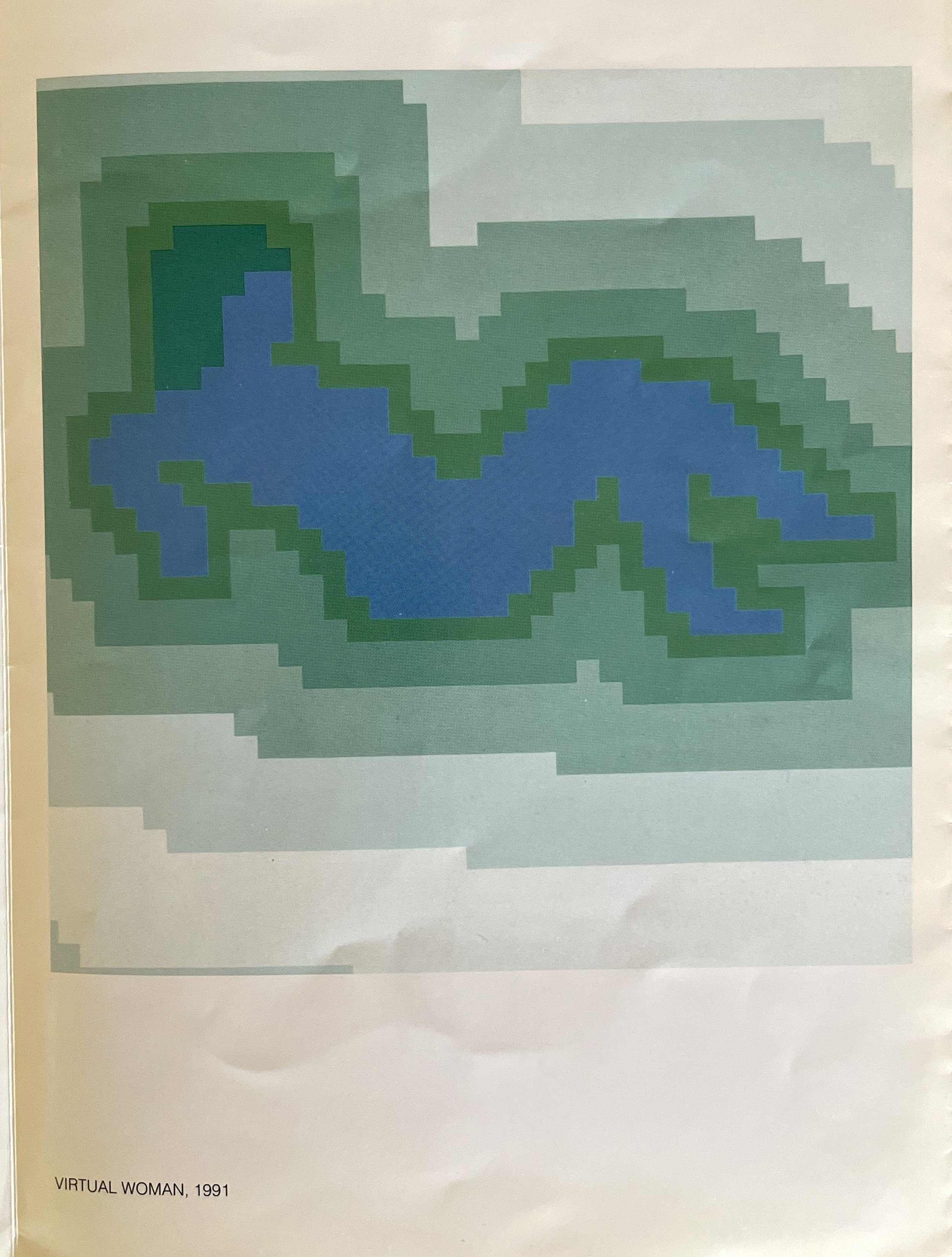Dr. Hugo Heyrman’s “Models of Reality”, 1993
Here are some of the images and text found from an original exhibition catalogue / pamphlet, signed and dedicated to our very own Richard Stephens from Dr. Hugo Heyrman. It’s incredible to have such contextual insight to what the his iconic “Pink Lady” was made for and what the Belgian Visual artist had in mind when he created “Lady Desert, Venus of Nevada” in 1992. It’s interesting that he had the show “Models of Reality” in ‘93, as it makes one wonder if he created the 25ft brick sculpture in the ghost town of Rhyolite, Nevada, USA first and then scaled the idea down, or if Lady Desert was the scaled up version of his pixelated woman.
“Just as the telescope opened the universe and the microscope revealed the microcosmos, the computer is now opening virtual worlds, new models of reality. By discovering other world-images, the arts and sciences escape again and again from every new conclusion and definition. In principle, art is individual freedom, the virtual, factor x.
The "Models of Reality" originated from the idea to build a simple 3-D model of a visual consciousness, whereby the intuitive phenomenon of the invariants is placed central. It is one of the most intriguing aspects in visual perception (the complex infrastructure of image and conceptualization). Invariants' are visual experiences who stay relatively constant throughout the ever changing configurations in the field of vision. They specify the continuity in every perception and make recognition and meaning possible. The invariant models' (colour, size and form-constancy) are developed from a playfull and visual way of thinking.
They give insight in the origin of form and meaning, in a reality surrounded by invisibility. We ourselves, are consciously and unconsciously a constructive element in what we perceive.
In cooperation with the computer, the invariants' are worked out in colour patterns. Perception, recognition, remembrance and imagination are disconnected from place, moment, perspective, space and time. Form, colour, intensity and meaning come together to a synthesis, to new invariants': a coexistence of all senses in one perception-model. By digitizing, for instance, the proportions of the human figure into cube-modules, no side of the model has been given a priority: they are equal. Then, the pixel-structures are disconnected from the electronic space (Cyberspace) and modulary build up into a 3-D model.
"Invariants' are indefinable by a form, they only indicate the sensitivity of a difference. They are surrounded by a continious change and saturated by what they are not: the more something changes, the more it is the same. In the models there is a structural balance between form and content, between intuition and reflection. It is the blind spot in visual thinking, the unfinished meaning. The models can be seen as prototypes, metaphors of a Virtual Reality' (VR): a reality without a model and the reality of the model.
In this vision 'seeing' is the intuitive discovery of an unknown unity. With the lightness of the imagination, the models are showing that the recognition can increase as the naturalness decreases, in that way the illusion becomes transparent. In essence they are exemplary universal. In their simplicity they give a feeling of coherence and continuity, the unfolding of time. The simultanious fascination for past, present and future, gives the models a mythical dimension.
It is the expression of: "A Vision is Finer than A View"
Utopia, belongs to the dreamers.”
- Dr. Hugo Heyrman, 1993 exhibition text from “Models Of Reality”, 1993







